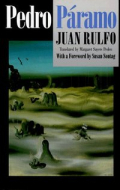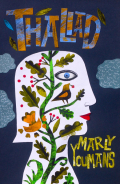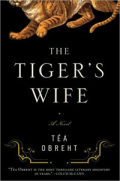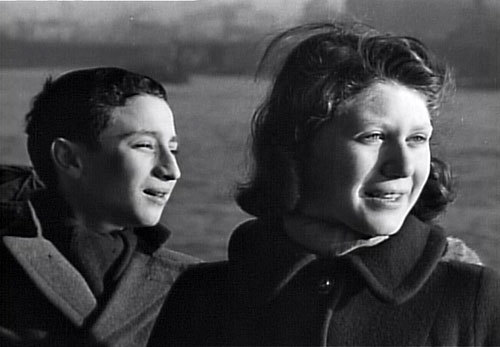Midori Snyder's Blog, page 11
May 14, 2021
Knowledge displayed in the Margins.
In Medieval books there is almost as much information in the margins as in the text. The art is another coded version of the text, one that if you know the language, visually expands the discussion. But how to read it? That is something I am hoping to learn more about.
May 9, 2021
Happy Mother's Day!
April 13, 2021
An Older and Newer Look Into Childhood, the Creative Process, and The Armless Maiden.
This is a wonderful thread -- first begun in 2018, with terrific authors like Marly Youmans, Mo Crow, and one of my favorite artists, Katherine Ace. It is a very open discussion on the intersection of our personal stories, and the impetus to create in art and in text. Stop by and have a look and join in if so moved.
A New French Translation of The Girl Without Arms for Suisse LeCourrier
I recently had a wonderful opportunity to meet with Monique Kountangni, who was interested in translating into French my essay "The Girl Without Arms," from Terri Windling's anthology, Surviving Childhood, Tor Books 1995. Monique is an accomplished translator and she published, with my enthusiastic permission, the French version in the Swiss edition of Le Courrirer. I am looking forward to rediscovering how much French I can recall -- and brushing up! So very grateful to Monique for the work she has done on my behalf. Click on the link below to check it out.
Download La jeune fille sans bras_Le Courrier_6 avril 2021
And should you be interested in translation of your own work, let me recommend Monique -- stop by her website, listed below.
[image error]
Monique Kountangni
monique@bagaelcatranslations.ch
+41 (0) 78 705 38 98
bagaelcatranslations.ch
March 12, 2021
Of Border Crossings and Mythic Journeys : Yuri Herrera
In the wake of the borders crossings now occurring, along with the tremendous dangers, particularly for young girls and women, I wanted to return to a novel that brilliantly describes and almost mythologizes such an under-taking. Here is the original review I wrote quite a few years ago. It still holds-- maybe even more so today as I now live the Southwest and see first hand the struggles of those attempting such an arduous crossing.
I have just finished reading Signs Preceding the End of the World, by Mexican author Yuri Herrera and it is an amazing and haunting work. A young woman Makina is given a note from her mother to take to the older brother who has disappeared into the North. Along the way, Makina encounters a series of ambiguous helpers: the thug who mysteriously owes her mother, the trading of favors with a coyote, the strangers who pull her along the road, the rivers, and mountain passes, and then the cities themselves, full of mazes, flags, and shops until -- almost miraculously, she arrives at a place to discover her brother, changed utterly.
The novel is short -- just nine chapters, but emotionally dense in spare, poetic language. Makina is a resilient heroine, at once navigating the world of people but equally sensitive to the changes in the landscape. When a sinkhole opens up in the street, swallowing an old man, a dog and a car, she reflects on the "earth's insanity" beneath her feet, sensing the crumbling holes left by the abandoned silver mines of a dying town, falling into itself. Tossed by violent currents while crossing the river, she ceases to struggle, and immediately the sound of the breaking water transforms into a green and peaceful silence. She sees the approaching mountains she must cross rising up, as two forces colliding, "crashing noisily against each other," and she is carried through the city on the exotic scents of spices and food pouring out of supermarkets and restaurants.
Makina's journey north is a rite of passage for this young woman -- but it is also an opportunity to describe multiple journeys and border crossings in the mix of different languages, those spoken at home, on the road, and in the cities, where words must be invented to adequately describe the new world. There are border crossings of cultures -- those of the traditional life of the past; those who are on the road moving forward to an unknown destination, shedding clothing and possessions along the way; and those who have arrived and dug in, embracing a new language, the veneer of a new culture, and sometimes disappearing altogether in a new identity.
It is a really remarkable novel; mythic and modern together. Poignant, full of loss and compensation, great beauty and frightening decay, excessive love and biting cruelty. And Makina, calm and brave, attentive to the changes in nature, in human beings, and in herself as she travels, makes for a remarkable guide.
**And do read the translator's notes at the end. Fascinating, about the difficulties of translating a work with such spare but evocative language, wrangling into English the nuances and invented words.
The Spine of a Novel That Tends to the Eternal
���Traveling is a brutality. It forces you to trust strangers and to lose sight of all that familiar comfort of home and friends.You are constantly off balance. Nothing is yours except the essential things: air, sleep, dreams, sea, the sky - all things tending towards the eternal or what we imagine of it.��� --Cesare Pavese
The above is one of my favorite quotes as it seems to suggest to me not only the physical journey but the deeper emotional well of any good narrative of self-discovery. It's the foundation or backbone on which so many wonderful novels I have read over the years seem to rest. I am drawn to them because such a structure is how I tend to think when constructing the shape of a story or novel; our separation from the familiar, our trust in strangers, the off-balance, the journeying, the transformations and the leaning into all things eternal.
Here is a short list of my favorite novels that I have reviewed over the years that I feel in many ways embody the sensibilities of Pavese's brilliant observation:
 Pedro Paramo by Mexican author Juan Rulfo' opens with a spare compelling prose, like a darkly lived fairy tale, hinting at the ghostly journey to come in an altered landscape. In late August Juan travels to Comala, a town so hot and dry, popular myth has it that "when people die and go to hell, they return for a blanket." Juan is greeted by Eduviges Dyada, an old friend of his mother's, and quickly learns that Pedro P��ramo, the father he is seeking, is long dead. But the conversation takes an odd turn, as Eduviges tells Juan that his mother had told her just that day to expect him. When Juan tells his mother is dead, Eduviges merely shrugs and responds, "So that was why her voice was so weak." Read more > >
Pedro Paramo by Mexican author Juan Rulfo' opens with a spare compelling prose, like a darkly lived fairy tale, hinting at the ghostly journey to come in an altered landscape. In late August Juan travels to Comala, a town so hot and dry, popular myth has it that "when people die and go to hell, they return for a blanket." Juan is greeted by Eduviges Dyada, an old friend of his mother's, and quickly learns that Pedro P��ramo, the father he is seeking, is long dead. But the conversation takes an odd turn, as Eduviges tells Juan that his mother had told her just that day to expect him. When Juan tells his mother is dead, Eduviges merely shrugs and responds, "So that was why her voice was so weak." Read more > >
 Thaliad by Marly Youmans , both novelist and poets composes her story in free verse reminiscent of heroic epics (a sort of Homer meets Gerald Manley Hopkins), Thaliad recounts the aftermath of a fiery apocalypse and the perilous journey of a band of children led by a girl whose prophetic visions are guiding them. They seek a mystical a sanctuary on the edge of a lake where, even as children, they must confront the challenges of re-creating a world illuminated by hope and love. In this stunning narrative the eternal is always close at hand in both violent and transfigurative powers. Read more >>
Thaliad by Marly Youmans , both novelist and poets composes her story in free verse reminiscent of heroic epics (a sort of Homer meets Gerald Manley Hopkins), Thaliad recounts the aftermath of a fiery apocalypse and the perilous journey of a band of children led by a girl whose prophetic visions are guiding them. They seek a mystical a sanctuary on the edge of a lake where, even as children, they must confront the challenges of re-creating a world illuminated by hope and love. In this stunning narrative the eternal is always close at hand in both violent and transfigurative powers. Read more >>
 The Tiger's Wife by Tea Obrecht is an astonishing novel, set in what was once Yugoslavia over the course of WWI, WWII, and the recent wars that resulted in its dissection into new territories. War forms an continuous backdrop throughout the novel, often as a distant but deeply felt anxiety and sometimes exploding on the community. Travelling is a hazard as boundaries shift with the conflicts and "our city," or "our fields" abruptly become someone else's property. Identities shift too as the long married wife whose origin, faith, or language suddenly mark her as an enemy to the new state. Nadia, the novel's protagonist, is a young pediatrician who sets out on a perilous journey, crossing newly minted borders to understand the reasons for her beloved grandfather's strange disappearance and his death alone in a remote village. Read more > >
The Tiger's Wife by Tea Obrecht is an astonishing novel, set in what was once Yugoslavia over the course of WWI, WWII, and the recent wars that resulted in its dissection into new territories. War forms an continuous backdrop throughout the novel, often as a distant but deeply felt anxiety and sometimes exploding on the community. Travelling is a hazard as boundaries shift with the conflicts and "our city," or "our fields" abruptly become someone else's property. Identities shift too as the long married wife whose origin, faith, or language suddenly mark her as an enemy to the new state. Nadia, the novel's protagonist, is a young pediatrician who sets out on a perilous journey, crossing newly minted borders to understand the reasons for her beloved grandfather's strange disappearance and his death alone in a remote village. Read more > >
February 9, 2021
Reorganizing Priorities: What to Publish After Hannah's Garden
I have been going back and forth, trying to decide which of my out of print novels to reissue after Hannah's Garden. The stand-alone novels seem easier, cleaner, less complicated, and were at least well edited. But how wondrous and strange it is that the Oran Trilogy, that three-volume sprawling series, barely edited, continues to be the most asked for in my list. So be it.
With the help of a terrific editor and copy editor, I will spend the summer months re-reading and editing the original manuscripts. My greatest hope is that my readers will not notice the changes but rather sense the more cohesive narrative of the edited versions. It will be something of a journey backward for me, as it has been many years since I read the entire series.
I am looking forward to it, not just as an author, but as a reader, experiencing it for the first time.
PS: Time to redo the covers too!
January 18, 2021
Mythic Moments: The Arrival of the SS Excambion at New York Harbor, January, 1941
This is an older post, but one that I love to revisit as a way to memorialize my father Emile's life and the journey he took to arrive in the United States, a Jewish teenager fleeing Nazi occupied France. In this time of trial in our nation where politicians seek to use their positions to engage in mutual venial squabbling and punishing of "enemies" in congress and the administration, I return instead to the purity of the moment my father found true freedom at last in the US.
Can you imagine the most mythical moment of your childhood? That moment when everything changes and you know that going forward you will be profoundly different, that your life as you once knew it would be over. My father Emile was born in Paris -- his father an American ex-patriot and his mother a beautiful young Jewish woman -- anxious to leave her working class origins behind her. They lived in a fashionable area of Paris, and my father and his sister Rosine studied ballet at the Paris Ballet Opera House. By the time he was a teenager, my father was on his way to becoming a principal dancer.
Then WWII happened and the Occupation of France in collaboration with the Vichy Government happened and my father's life as a dancer was shattered. They were Jews and so no longer welcomed at the Opera House. For the last six months of his life in Paris not one friend would speak them -- they would cross the street to avoid him for fear of his pariah status rubbing off on them. My father rose very early in the morning before curfew and slipped through streets unseen in order to be first in the bread lines.
My Grandfather had been out of the country on business when the Germans invaded and was unable to return to France. But he was able to provide the children with American passports through the embassy. My grandmother and the children traveled to Portugal where they were promised passage on a cargo ship, the SS Excambion that was carrying a number of dignitaries (Madame Curie's daughter on her way to try and convince the US to enter the war on behalf of the Jews, and Isaiah Berlin and his future wife) and many Jewish children traveling alone to relatives in the US.
The photo above is a still from a short film of the refugees arriving in NYC in January, 1941. Someone sent the link to the film to me knowing my father's history, and asked "See anyone you know?" In the opening shot two young teens turn to face the camera and there they are -- my father at about 15 and his sister about 14. Later in the film, there is a close up of the two of them leaning out to take in the sight of NYC and the Statue of Liberty. (If you click the link you see the whole short film.)
This moment was very important to my father and he spoke of it often, included it in his poetry. So how amazing is it that some 80 years later and 29 years after his death this film surfaces, and I can see him again as a young man leaning into the sun, into his future. Yeah, you know I cried when I saw it.
October 2, 2020
Working on the Reissue of The Flight of Michael McBride.
 As the work on Hannah's Garden is getting finalized this month for release in November, I have also begun the work of re-issuing The Flight of Michael Michael, which will be published by Leaping Hart Press. Set in the late 1870s, the novel is an unusual pairing of Irish fantasy and and the iconic American cattle ride. What better way for a not yet hero to undergo a rite of passage? Here's an excerpt from the novel, where Michael discovers that he sees more things in the world than an ordinary man...terrifying creatures hunting him for reasons he doesn't understand. Here's an excerpt from Chapter Three:
As the work on Hannah's Garden is getting finalized this month for release in November, I have also begun the work of re-issuing The Flight of Michael Michael, which will be published by Leaping Hart Press. Set in the late 1870s, the novel is an unusual pairing of Irish fantasy and and the iconic American cattle ride. What better way for a not yet hero to undergo a rite of passage? Here's an excerpt from the novel, where Michael discovers that he sees more things in the world than an ordinary man...terrifying creatures hunting him for reasons he doesn't understand. Here's an excerpt from Chapter Three:
"...There was no carriage standing before him, but as he turned to look behind him, Michael tensed. There, waiting on a black horse, was the man in the red cap. Only now Michael saw it wasn���t a cap, but long red hair slicked down close to the sides of the man���s narrow face. Surrounding the man were other mounted horsemen spread across the street, their spears and axes held upright. On the pommels of their saddles were skulls tied together, festooned with red and green ribbons and the glint of twirling gold coins. In the shadows of the building, the horsemen���s faces were a deep mottled brown, their bodies thick and strong like carved oak. But in the open street, the sunlight drenched the armor and the warriors shone transparent as a sheet of gold rain. They were attended by wraiths whose pale gray faces wore masks of misery and who stared at Michael out of haunted eyes. Hands soft as dust clung to the bridles and held the mounts steady. Shadowed substance and shining light, they appeared to Michael at once solid and threatening as a closing storm and as vaporous as a misty dream. The man with the long red hair nodded at Michael.
"Red Cap. That���s what the tiny stick creatures had called him. And Michael recognized him at once. The man was hunting him, and time he���d brought an army.
"A crow cawed loudly overhead and the horsemen shifted in their saddles, their eyes trained upward toward the sound. Out of the blue sky, a huge black crow flapped wide her wings, driving a black shadow over the street beneath her gliding body. The horsemen stirred, clutching the reigns as their mounts became restive. The wraiths bowed their heads into the deep valleys of their bony shoulders. Red Cap broke away from the line of waiting horsemen to confront the crow. He pulled his long bow from a case in his saddle and knocked a long arrow of yew, its red fletch a streak of blood."
Rising Before Dawn to Greet the Harvest Moon
Sometimes I find it so amazing to live here in Boulder, beneath the Flat Irons of the Rocky Mountains. Every morning there is always something extraordinary to see, and to be filled with wonderment. Sometimes it is the elk coming down from the mountains to feed in the green flood plains where we walk, or to hear the early morning frog in the spring singing loudly to each other an invitation of sex. Sometimes the deep indigo blue of the bluebirds or the sun-yellow colors of the Mexican finches as they migrate through the fields of sunflowers and long grass.
And sometimes, it is this gorgeous pre-dawn sky and the full harvest moon brilliantly white as a cosmic egg, just before its descent behind the mountains.
Midori Snyder's Blog
- Midori Snyder's profile
- 87 followers











